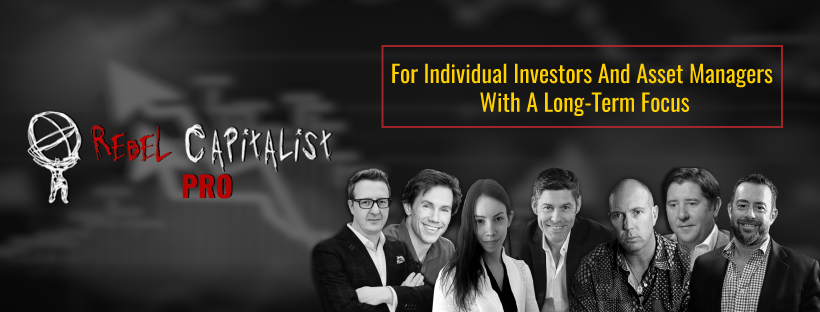Understanding Our Economy From The Standpoint of a Bond Market and Macro Expert!
Jim Bianco is an expert researcher offering a unique perspective of the global economy and the financial markets. His experience and ability to articulate these complicated concepts prove how well experienced and versed he is.
In this interview, we discuss the Federal Reserve’s actions and the future social dissent, Covid-19, it’s economic consequences, and the idea of reopening our economy and adjusting to the virus.
Jim also explains why there’s no going back to 2019 and how even if we go back by 90%, we would still be in a massive recession. He also shares his Austrian view of the correct policy response for 2020, and talks about the Fed funds futures.
Yesterday I held a conference call titled "A Retail Mania in Stocks & Fed Yield Curve Control"
If you are interested in the full conference call & presentation, sign up for a free trial: https://t.co/EfpwCdFlhh pic.twitter.com/wOyfsBk4CF
— Jim Bianco (@biancoresearch) May 22, 2020
Find a comfortable place, kick your feet up, and take a journey through Jim Bianco's brilliant mind. This one is going to be a fun ride.
Jim Bianco’s Background
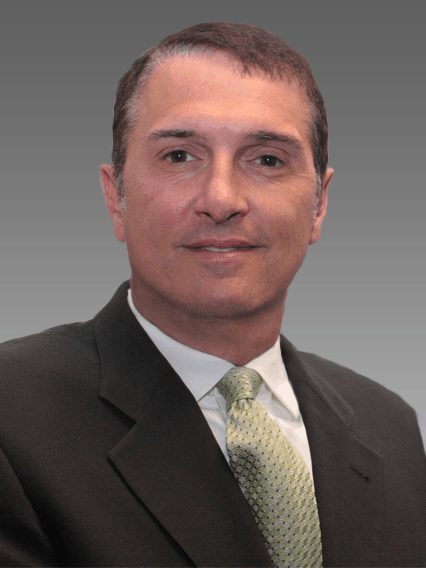
George Gammon: All right, guys, it gives me a great deal of pleasure to bring someone to the Rebel Capitalist Show that I have a tremendous amount of respect for.
I've been super excited about this interview. He is an expert on the bond market and macro.
His name is Jim Bianco. Jim, welcome to the Rebel Capitalist Show.
Jim Bianco: Thanks for having me.
George Gammon: All right, so, for my viewers who might not know your backstory, can you get us filled in on that?
Jim Bianco: Sure, and I might say that I'm a big fan of your show, so I'll do my backstory in three steps.
But I came out of Wall Street in the 1980s. I used to work for Shearson, Lehman Brothers, and First Boston before it was Credit Swiss.
I'm originally from Chicago. In 1990, I got affiliated with a bond brokerage firm here in Chicago, which is where I'm at right now called Arbor Research and Trading.
And in 1998, I spun myself off into my own research firm called Bianco Research. Still affiliated with Arbor.
Most of my research tends to be more fixed income-oriented, and macro-oriented as well.
My audience is largely an institutional crowd. It's largely a fixed income crowd too.
The benefit I have with a firm like Arbor is that while I'm affiliated with a brokerage firm, they don't really position.
So I don't have to go to them and say, “Hey, you know that big inventory of securities you have that's about to go down in prices?”
They don't have a big inventory of securities. They don't care as long as… All they care about is what most brokers care about, just volatility.
Just make it go up or down, just make it do something. So that's been very good.
So it's really gotten rid of my conflict of interest as well too. I tend to be more quantitatively oriented toward the way that we attack the markets more than anything else.
I taught myself how to program. I use a lot of sophisticated programming languages too.
I'm always on the hunt for data to try and come up with a lot of different charts and statistics in ways to show things. So that's my backstory in a quick second there.
The 90% Economy

George Gammon: Yeah, and I want to be clear, it's not just the institutional investor. I was on your website today.
I watched the conference call you had, and that you recorded. It was just absolutely amazing, very easy to understand.
You titled it the 90% conference call, and I found it absolutely fascinating. Could you go into greater detail on what it was about?
Jim Bianco: Yeah, and that was the cover story of this week's Economist, the 90% economy.
What they talked about in that, and what I had been talking about for some several weeks now is: let's say that we reopened the economy, globally, and we get back to 90% of where we were.
Most Wall Street goes, “Great, we're back to 90%.” Except, let's put that into perspective.
In the great recession in 2008, at its worst point, we were still producing 96% of the output that we produced at the high.
So you only lost 4%. Now is enough to have the stock market, put a 10% unemployment rate up, create the tea party movement, occupy wall street.
The great depression in the 1930s, at its worst point in 1933, the output was still 75 or 74% of what it was in 1929. And that produced a great recession.
What I'm trying to say is, if you tell me that the economy is on its way back to 85 or 90% of what it was before the pandemic, I'm telling you we're re-running the great depression, because that is not going to do it.
What's going to get us back is 98, 99. Actually, 102 would be better is if we got further back than we were before.
That kind of drop off is going to be where we are going to have big problems.
That's my big bugaboo with Wall Street right now, they'll point to statistics like open tables, reservations at restaurants, or the mobility data that Apple puts out from their location services and go, “Look, it went up.”
So what? Tell me when it gets back to 98%. Put it to you, let me stick with the restaurant.
If I own a restaurant and I had 300 people a day come through my restaurant, what do I need?
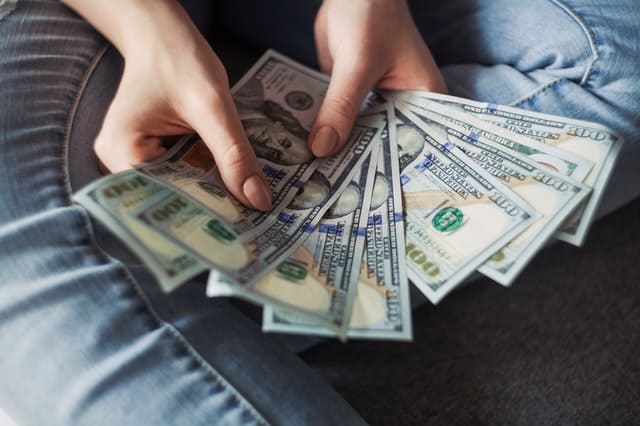
I got my PPP loan, and I still have everybody employed. Let's forget about whether or not they're getting paid more from the government to not work, but they're all still employed.
If I had 300 people before the pandemic, I probably need 285 or 290 to basically get back to where I was.
If you tell me, “Oh, it's all going, well, you're going to get 250 or 220 people,” when you used to have 300, I've got to lay off half my staff.
George Gammon: Yeah, especially when your margins are 5%. Right.
Jim Bianco: Yeah, or put it to you differently.
A 90% economy is a 10% hit in revenues, especially in a leveraged economy like we are now, and with levered companies, you can't survive with a 10% hit. So, we've got a long way to go before we get all the way back.
That's been my biggest concern. We need to understand how far back we have to come, most of the statistics show we're not close to that right now.
George Gammon: Yeah. Also, you talked about the PPP, which is one of those things that might have a lot of unintended consequences that the government and the fed just really aren't thinking through.
The consequences were, if you're a small business owner, using the example of a restaurant, if they take out that PPP loan, they have to pay it back if they lay anybody off.
So how does the PPP loan work when you've got 50% of the volume, or even say 80% of the volume of your customers?
Jim Bianco: There's another thing too.
Obviously, if you take out the loan, you want to get it to be turned into a grant, so you don't have to pay it back.
The condition is you can't lay off anybody, but if you go out of business, you don't have to pay it back.
So instead of laying off 40% of my employees, and then pay back the loan, I could close my business, and then I don't have to pay the loan.
So instead of 40% losing their jobs, 100% hundred percent lose their jobs.

They're going to set up this perverse incentive with the way that they've done these loans.
And I think that's largely understood because in the second round of the PPP loans, when they put out the refunding of it, they thought it would last 12 days.
It's been three weeks and they've hardly put out half the money. I think a lot of businesses understand that.
If I take out this loan, it's a temporary thing to pay my workers, but then I can't lay them off if my business doesn't… I don't want to lay them off.
But if my business doesn't come back, I can't adjust my workforce, except close my business.
And I don't want to do that. So yeah, it does set up a bunch of perverse incentives.
George Gammon: Yeah, so they don't want to take on the additional liability and having that burden on their shoulders.
So that could put them more at risk of going out of business. Or at least it doesn't get the money from the fed or the government to main street.
There's still that line in the sand that it doesn't cross. That was a big problem.
Probably for the last 10, 12 years, you've got all these bank reserves being created at the fed. And they're just only going into financial assets.
They're not getting into the real economy. That seems to be always the problem.
Social Dissent
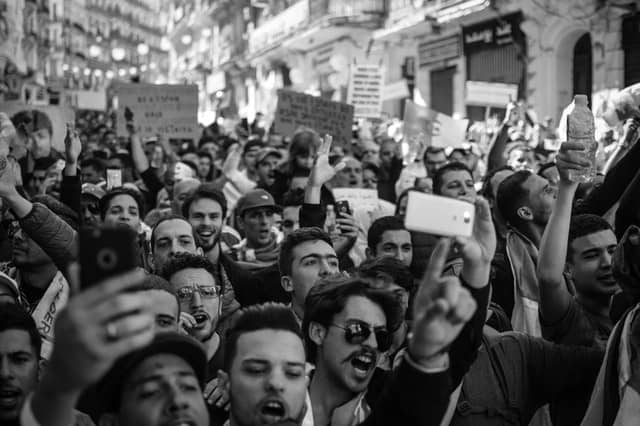
Jim Bianco: That's right.
Because all the fed can do is provide it to the banking system, and then they have to trust or make sure that the banking system turns around and redistributes the money to the parties that need it.
And that was the big thing that happened in 2008.
They created all these programs, and we trade all these programs to make sure that the banks are well-capitalized, and the banks say, “Thank you very much. You gave me all this money, you keep me in business.”
Well go out and hand out loans. And the banks go, “Are you kidding me?
Have you seen how bad the economy is? I have no interest in handing out any loans to anybody.”
And that bred a lot of social dissent. First, you had the tea party movement, then you had occupy wall street.
I like to say that, what did they have in common?
The tea party movement was mad about the bailouts and they blame the government.
Occupy wall street was mad about the bailouts and they blamed Wall Street. But both of them were mad about the same thing, what happened.
It was just who they thought was at fault for it where they disagreed. So, you see that happening again now in the financial markets all over again.
The fed has put together this endless alphabet soup of programs. They are shoving money into the financial system.

That money is helping to support financial prices, but whether or not it actually filters through into the real economy, it hasn't yet happened.
Now we're in the early days, most people that have lost their job are still getting a thousand dollars a week or thereabouts on unemployment.
A lot of them probably got a raise for being on unemployment.
Jim Bianco: A lot of others have only been laid off for a couple of weeks.
There's the talk in the press about restarting. The University of California did a survey of people that are on unemployment in the state of California.
85% said, “I will get my job back once the crisis passes.” So the anger is not there yet because there's still this belief, “Oh, this will go away and this summer I'll be back employed.”
Or, “I lost my job, but I'm getting as much money in unemployment as I was working.”
But once this starts to filter through, and it takes more time, and it isn't working out like you thought, maybe I don't get my job back.
Once it's over, then the people start to assess, “Who won? Who lost? And where was I in that mix?” So I think we're in early days on this thing and we've got a ways to go.
Covid-19 From Now On…

George Gammon: Yeah, it's when reality replaces hope type of thing.
I know you've done extensive research on the virus and you were one of the first people with Chris Mortenson, and my buddy Eric Townsend, and with Macro Voices to start doing the thinking and throwing out the data.
I know you took a lot of heat on that, but I'd love to get your opinion on where we go from here.
Jim Bianco: You know, as far as the government goes with the virus, I had no problem with what they did in mid-March because we didn't really understand what was going on with it.
But now that we're into May, we know a lot more, and we've got the Sweden example as well.
Also, I really don't like the way that they've really redefined the whole problem.
In other words, it was flatten a curve. Remember flatten the curve? Remember what they told us about flatten the curve?
First of all, it produces the same number of cases if you flatten the curve, just over a longer period of time.
You're not saving anybody from getting sick when you flatten this curve. What you're doing by pressing it down is making sure if you get sick, there's a hospital bed and proper medical care for you.
That's all we're promising with flatten the curve.
We did that. It's done. So what are we waiting for? With my governor JB Pritzker in Illinois, or with Andrew Cuomo in New York, or Bill DeBlasio, the mayor of New York saying, “We have to be locked down until June.”
What are you waiting for? What magic signal are you waiting for to tell you it's okay to open?
They keep saying, “Well, we have to save lives.” Well, no you're not. You're just making it go longer.
Everybody's supposed to get it. Herd immunity means you're going to get sick, I'm going to get sick, my kids are going to get sick, but hopefully slowly over time, and hopefully there will be proper medical care, and then we can build up herd immunity.
But if the answer is we've got to stay locked down until we get a vaccine or until this goes away, well, it isn't going to go away unless we get our vaccine or we get herd immunity.

Jim Bianco: Word about the vaccine. Do you know how many coronavirus vaccines in the entire history of medicine we've developed? Zero.
But this supposedly going to be the first one that we're going to develop? I'm not a virologist, but I'll just say I see the track record.
I know they've been trying for 50 years to put together coronavirus vaccines, and they've never done one, but yet now we're supposed to have this one done in a period of a year?
It'd be great if it happens, but I'm not going to hold my breath and wait for that vaccine.
So I think really what we need to do is the Sweden thing. You and I, and everybody watching this, we know what we need to do. Social distance, wear a mask, wash our hands, go ahead, let us go about doing it.
The last thought for you is I lived in New York City and I have two kids that live in New York City. They're here with me in Chicago now, and I'm very familiar with New York City.
If you're going to leave the subway system open, the perfect transmitter of a pandemic, nothing else that you do in New York City can be as dangerous as riding the subway system. So go get your hair cut, go on out for dinner. It's not as bad as getting on the subway every day.
Most of the reason that New York City has got such a problem is the subway system is still open.
That is the perfect closed environment for having people… “Everybody get together, breathe on each other for 10 minutes in this car and then everybody disperse throughout the city.”
You couldn't have found a better way to spread out a virus. And if you're going to allow that, then allow the restaurants to open.
Because it can't be worse than allowing the New York subway system to stay open.
Reopening The Economy With Covid-19

George Gammon: Yeah, but even if they allow these things to open up, is it going to matter?
Going back to your data where it says we've got to get up to 100%?
Maybe that allows us to go from 50% to 65 or 70. And I know for some people it definitely wouldn't matter, but overall, does it really move the needle?
Jim Bianco: It doesn't move the needle short term, over the near term, the next year or two.
But what it does do is it gets into my criticism of what the fed is doing. I've argued even all the way back to that video I did with Mortenson and Townsend back in early February.
George Gammon: Yeah, yeah, yeah, I remember that well.
Jim Bianco: There is a pre virus era and there's a post virus era.
This virus is going to be the defining moment of this generation. There was the world that it was, and then the world that we're going to. So we're transitioning to some new era. I don't think we are in some kind of state of pause and then we go back to 2019. We're going somewhere else.
So let's open up and let businesses start to figure out what that new era is. Let them start to get going there.
So you're right, we're not going to go back to 100%. We're going to go back higher and higher and higher.
We're going to come up short and that's going to be a problem for the economy.
But if you ever want to get back to some version of a 100%, we need to restructure the economy and that's not going to be waiting for the white house to tell us how it's going to be restructured.
It's going to be you, me, and everybody else figuring out the new rules of the road. So let's get about figuring out the new rules of the road.
That gets me to the fed. I've got very mixed emotions about what they've been doing on this.
On the one hand, I'm a libertarian Austrian at heart. I think that government involvement is always bad, and I believe it's always bad, but also this is unusual.
Adjusting to Covid-19

Jim Bianco: If Peter Schiff is watching, Peter, I've been wanting to ask you this question.
I'll throw it out to you to George, maybe you can give me a feel at it.
The government took a bunch of perfectly fine running businesses and said, “Close. Stop doing your business.” Drove you out of your job, drove you out of your business. The takings clause of the constitution says you can't do that without compensating me.
So in some respects, I'm owed compensation because you took a perfect business and you forced it shut. This is not the free market saying that I've become obsolete or something else has changed.
So the heavy government involvement is kind of a payment for that shutting down those businesses.
I get the heavy fed involvement is that. Besides, I don't think they were ever going to sit back and say, “Wow, look at that, everything's falling apart, but we can't do anything about it.
The national debt just passed $24 trillion, up $4 trillion since @realDonaldTrump took office. He will add more debt in 4 years than Bush did in 8. If reelected he will add more debt in 8 years than Bush & Obama did in 16. Instead of draining the swamp, he is draining the nation.
— Peter Schiff (@PeterSchiff) April 8, 2020
So make some more popcorn and let's watch this thing unfold.”
They had to step into it. Where my complaint comes in is: what is it you're trying to do?
And what it seems that they're trying to do is they're trying to say, “We want to bridge us to when we can go back to 2019.” Well, we're not going back to 2019.
If you want to say to people, “Look, you lost your job. It's a new era. Here's some short term assistance to help you because it came on so fast.”
And then we could say, “But at some point we've got to start the process of adjusting.”
Because the longer we try to hold everything in suspended animation, the longer it's going to take us to get past this. So we need this adjustment process to go on.

When you hear companies like Twitter saying, which they announced yesterday, “everybody can work at home now, forever.”
And a lot more companies are saying you can work at home now, forever.
A lot of big businesses in New York City, Jes Staley, who's the CEO of Barclay's Bank. They've got a big 50 story office tower in Midtown with a couple of thousand employees in it.
They're now understanding, and this applies to all the Midtown Manhattan office buildings, the new social distancing rules are two people to an elevator. That's never going to work with a 60 story office building. So what Jes Staley said is our employees may never go back to that building, never go back to that building. That alone should tell you what an epic change is coming.
And I want to use the word change. Yeah, it's going to be a struggle in the beginning, but then we're going to change and we're going to come out of it.
I do believe in human ingenuity. I do believe we'll get past this, if we allow the ingenuity to get past it.
But if we keep throwing money at everybody and saying, “No, don't change anything, stay there. Sit there and don't do anything. Here's a thousand dollars a week. Don't move, don't look for a job.” Then we're never going to get past this. And that's what my biggest concern is.
The Problem Of Paying People To Stay Home
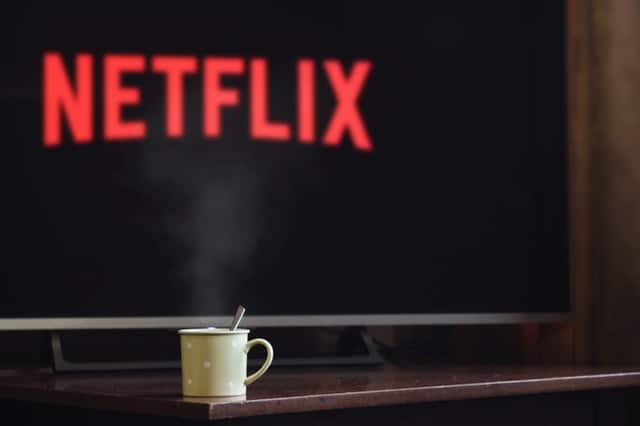
George Gammon: Yeah, how do you combine that with the fact that, just to your last point there, the government is basically paying people to stay home.
So you have all these employers that are competing now with the government for these employees to produce goods and services.
Jim Bianco: That's a problem. It's a problem on two levels.
One, if you look at Google search trends, you don't, what's not surging on Google search trends?
In fact, I just tweeted it out from my colleagues at Arbor Data Science.
George Gammon: Job openings?
Jim Bianco: Yeah, people searching for a job.No one is searching for a job on Google search trends.
Now, part of that is that they probably conclude, probably rationally, now is not the time to be looking for a job because the economy so bad.
But I think part of that also is, “I'm getting paid a grand a week to not find a job. Why should I be busting my balls to go out there and find a job?”
And they're not, and that's going to be a real problem as we move forward from here.
We need to restructure the economy and restructuring the economy is not endless money printing and endless government bailouts of everybody.
I get it, you've got to get it for right now. It came on everybody fast. I get it. 40% of the public doesn't have a thousand dollars of savings.
And most of those people, they got hit more with losing their jobs. You just don't want to cut them loose.
I understand that, but that doesn't mean that they become a permanent ward of the state.
At some point, we're going to have to end this, and at some point we're going to have to start the restructuring process. It ain't going to be pretty. But I do know, I believe that if you let it happen, it will happen fast in a period of a year. Maybe 18 months would be my guess.
But if you want to do like 2008 and string this out for three, four, five years because you just keep doing money printing, quantitative easing government programs.
That's when it's going to be I think more painful in the long term.
The Correct Policy Response For 2020

George Gammon: The hard thing for me to reconcile is…
Going back to the Austrian school, If you look at a recession, it's really considered the cure for all of the malinvestment and the misallocation of resources, the excessive debt, etcetera.
I look at it like going to the gym. So if you go to the gym, it's not easy, it sucks. It's hard work. It's very difficult, but it makes you stronger just like that recession makes the economy stronger.
So if you can argue back in 2008 that we should have gone through a deeper recession to clean out the system.
We tried to kick the can down the road and that made the entire system more fragile to where we are today.
How do you reconcile that view with the correct policy response in 2020?
Jim Bianco: That's a good question. It's a tough one, but you're right. We do need to clean out the system. Let's go back to 2008.
Remember we used to call QE unconventional policy? Now in 2020, the conventional part of it is the standard QE. The unconventional part of it is buying ETFs and corporate bonds.
We keep this mission creep going and going. But what is the effect of all of that?
Is the zombie companies that are been out there. A zombie company is basically a company that has more interest payments than earnings.
That's like 15% of the companies out there right now. But we keep them afloat because we force interest rates down lower and lower.
And in the case of Europe, negative, to keep these companies going as well.
If you don't allow companies to bend and fold in shape, and maybe fail and reborn, you're never going to get yourself a truly healthy system.
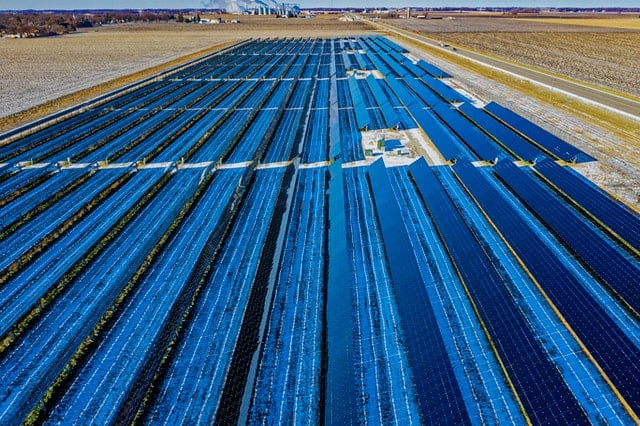
I'll give you an example. We build out the auto industry in 2008, the auto industry in 2008 was failing largely because it needed to radically change. But we didn't allow it.
George Gammon: It needed to fail. It needed to restructure, right?
Jim Bianco: Right, and see the is, most people think that when you say the auto companies need to go bankrupt, they confuse that word with liquidation.
No, we're not going to liquidate them. And there's going to be a half-done car on an assembly line with weeds growing through the floor.
We're still going to make cars. We're just going to make them in a different way.
So by not allowing the auto industry to come and restructure, you give rise to a company like Tesla, which winds up becoming an out of control bubble because it's competing with a bunch of zombies that could never make Tesla honest.
Tesla could never be made honest because the auto companies that they're competing with are not allowed to change.
They still have to deal with all the legacies that they had because you never allowed that to change.
We need companies to change. We need them to bend and fold. As much as it's terrible for taxi drivers, the Uber's of the world are a good thing in the long run.
They also tend to be net producers of jobs. I understand, “Oh, but you make more as a taxi driver than you do as an Uber driver.”
Yeah, but there are 10,000 taxi drivers and there are 65,000 Uber drivers in New York City. At least pre-virus there was. So it gives more opportunities for jobs.
So we need to get about doing this because when the fed comes in with their programs, and when the fed starts doing this, they are promoting a status quo. We need the Schumpeter creative destruction to be happening at this point.
And by promoting a status quo, and I understand, I want to emphasize again, yeah I get it.
You weren't supposed to take a bunch of people that made less than $40,000 a year and say, “You're fine in February. You're done in March.”
It's hard, it's really hard to put that on them. So I get it, we need to help them a little bit along the way, but we need to get going about this change.
Every time I hear President Trump say, “Oh, we're going to boom like we never boomed before on the other side.”
What he's saying is we're going to go right back to 2019. I'd like to think that, but just when companies are being told that you never have to go back to the office, again, for starters, it's already different and it's not going to be 2019 under any circumstance.
The Fed Funds Futures

George Gammon: Yeah, I'd like to go back to the early 1980s when our debt to GDP was 30% and the market cap to GDP was maybe 40, 45% calling it, the buffet indicator.
I think that would be far more healthy, but that's just my opinion. Hey, can we discuss the CNBC interview that you tweeted the other day?
I think you were on yesterday or the day prior. I thought it was really interesting when you were talking about the fed funds futures going into negative territory and then also Japan too.
I'm sorry, in that CNBC interview, you talked about Japan. I'd love to discuss that as well.
Jim Bianco: Yeah.
Fed fund futures are just a way for the market to express an opinion about where the fed funds rate is going to be in the future.
And by early next year, you're starting to see some numbers come up. Now, they're small. So they're starting to lean towards the idea that the fed might go to negative interest rates.
But again, the odds are very small, but I still think it's significant that we've crossed the Rubicon and that traders are willing to go and trade them into negative territory as well.
So what does it mean if the fed was to go to negative interest rates? That means the bank pays you.
The financial system, I'll bottom line for you. The financial system was never built for negative interest rates. You can build a financial system for negative interest rates, just not the one we have right now. The banking system, the financial markets, the plumbing of the financial markets, simply will not work properly with a negative rate.
Now we've had them in Europe, and we've had them in Japan, and people will say, “But it did kind of function,” yeah, it kind of dysfunctionally through the European financial system and the Japanese financial system, but they had a big out.
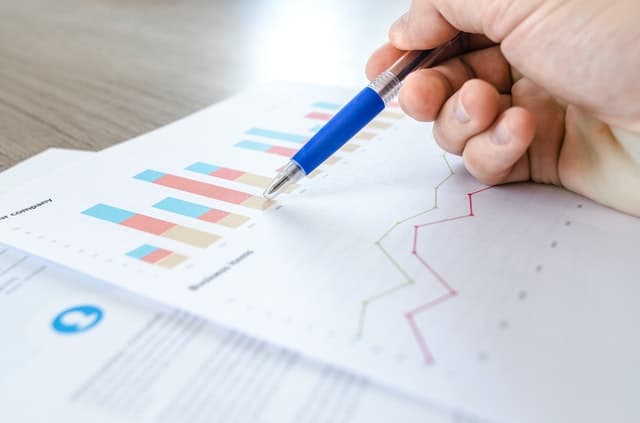
The reserve currency of the United States was always positive. Now you push us into that territory too, then you wind up pushing us into that negative system.
Now, President Trump tweeted earlier this week, he called the negative rates of big gift.
Sure, any levered real estate guy would think that of negative interest rates.
You mean you're going to give me a boatload of money to build a building that no one needs? And then every month you're going to give me more money? That's what negative rates mean?
What a great idea! Sure. But the lender, the financial institution that's supposed to give you that money, they're going to go out of business.
Now, maybe you think they're a bunch of banksters, and I'm not going to disagree with you.
A bunch of them are, but it doesn't help us to wind up having the entire financial system crash and burn all around us because of negative interest rates.
In Japan, they went to negative interest rates. And here's the problem when you start pushing into negative interest rates. It's an unnatural act in markets.
We've had interest rates for 5,000 years. Sidney Homer wrote a book that actually tracked interest rates back to 3000 BC. In fact, I've got that book somewhere in my office. I'll find it later, but it's 700 pages in that book. Nowhere in there are negative interest rates before 2014. What that means is that a negative interest rate is a government-directed thing.
When you start directing markets where the government starts setting the rate in markets, you wind up what happened in Japan.
That is the day that the Bank of Japan goes to QQE, qualitative-quantitative easing, they said, “Okay, we're going to try and target the tenure yield at zero.”
Okay, I'll be generous the day you did it, that was probably close to the proper value. Four years later, you're still targeting the same number, you never changed it.
I think you've got the wrong level. You've chased the private sector out of the Japanese government bond market.
There are whole days, whole days, where benchmark issues in Japan don't trade. It barely trades 10% of what it traded 10 years ago right now.
Jim Bianco: Volume shrivels up and goes away.
If the government's going to set the price, even if you admit that the day they set it it's the right price, eventually, it will be the wrong price. And when it's the wrong price, people are not going to be interested in transacting in that market.

Oh yeah, there'll be sellers that think the price is too high or buyers that think the price is too low that want to do a trade, but no one will be on the other side of that trade and therefore the volume disappears and it goes away.
This is the mistake that they make.
The whole reason we have markets and price discovery is because we don't know what the true value is. It's not a math equation. It's not an equation a bunch of bureaucrats in Washington can divine. It's the wisdom of the crowd.
We forever seek the proper level and then we change our minds, and we seek it again, and we change our minds, and we seek it again. That's how markets allow us to be efficient.
The government is going to be running the show like we are dangerously getting close to right now.

